Advertisement
Published: March 28th 2012
Said our tour guide as we left Edinburgh.
It turned out later that he wasn't joking.
Right. So before I start my 4-entry review of my 5-day Highland Tour, I want to get this out of the way. In the past, I've described hostels and recommended them if I thought they were good. Because I tend to go to places that don't charge as much, I feel that it's a good thing for me to pass the word on, for their benefit as much as for anyone who may be reading this.
As an (extremely) amateur blogger with very small readership, I don't presume that my recommendations do much. But because of that, you can guarantee that I am not benefiting from them in any way. If I say "you should go here" I mean I honestly think you would be happy if you went here.
The MacBackpacker's tour was an incredible experience and I am so grateful I did it. If there was a flaw in it somewhere, I would tell you about it. There wasn't. It was amazing. If anyone reading this is planning to visit the Scottish Highlands, look into a MacBackpacker's tour. Better than renting a car, or attempting to navigate public transit. You don't have to worry about accomodation (the hostels we stayed in were very nice, and bookings are guaranteed for everyone, you just pay when you get there), the guides are hilarious and knowledgeable and enthusiastic, and of course you meet some very interesting people. If a 5-day tour sounds like too much, go
here and see if one of the other tours sounds better.
Because March is still the off-season in the Highlands, our tour was not heavily booked. Which was actually really nice, because we all got to know each other and it was a much more personal experience. Aside from the guide (who is a Glaswegian), there was one guy from Glasgow, two brothers from Portugal, one guy from Australia, one guy from Canada, one girl from Germany, and of course me. Everyone came from very different backgrounds and had traveled to many different places. It was fascinating to hear where they've been and what they've experienced.
Like I said before, the guide was very knowledgeable about Scottish history (though he may have embellished some parts), mythology (same), and geology (definitely same: a suspiciously detailed story about exes hooking up somehow became a metaphor for tectonic plate movement).
Anyway, he came up with the best analogy for England-and-Scotland-are-different-countries-that-are-part-of-the-same-country that I've ever heard. He said to think of it like England and Scotland are two countries that are married. Which sounds ridiculous, but helps a lot to figure out how this country-of-multiple-countries thing works.
Except that it made me wonder how Wales and Northern Ireland fit into the scenario, and after a bit of thought,
this was the best I could come up with.
It's up to you to decide which country goes with who.
Our first day consisted of a multi-stop trip from Edinburgh to Inverness, a small city in the Highlands. It was really fun to watch scenery change from urban center to suburbia, to flatlands, to rolling farmland, to more and more dramatic as we gradually moved farther North. It was like driving out of Edinburgh into rural upstate New York, and right over the border into Alaska.
Our first stop was a forest reserve in a place called The Hermitage, just north of the city of Perth.
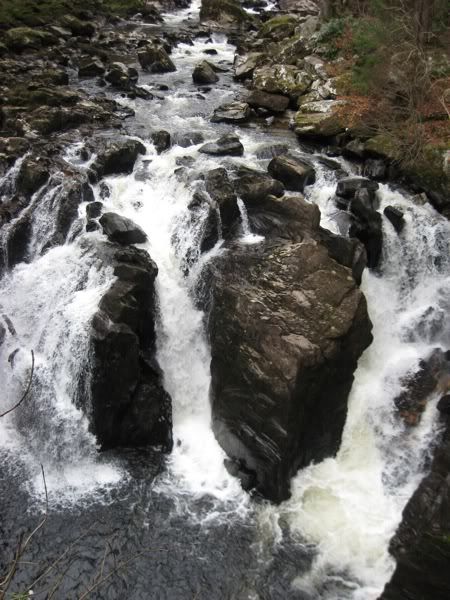
Technically, we were still in the "Low-Lands." The area was gorgeous, similar to areas of Vermont.

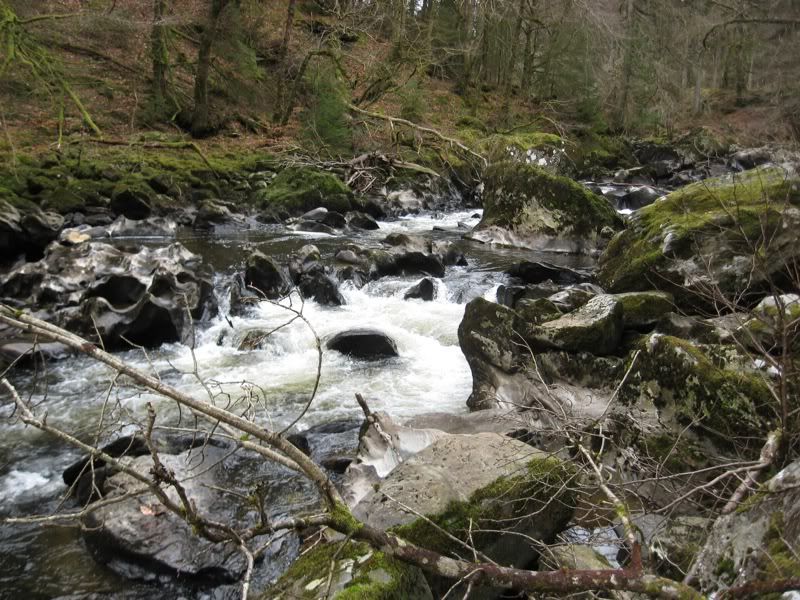
In fact, except for the mural with Gaelic captions, this could have been a number of places in New England. It was very peaceful here.
Our second stop was a village called Pitlochry. This, we were told, was technically in the Highands. It was a very touristy, very posh place. It had a bunch of hotels and guesthouses, expensive cafes and upscale, artsy souvenir shops about every ten feet. The crafts showcased in many of the window displays were beautiful, but obviously expensive. Residents of Vermont will understand what I mean when I compare Pitlochry to a small town called Woodstock (
not to be confused with the famous concert).
All of the buildings were the same grey stone, with images of thistles and bluebonnets everywhere. Pretty much everyone sold wool and tartan, objects with Gaelic symbols, one place even carried jewelry made from heather that had been dried, dyed and pressed into stones. We bought lunch here but didn't stay to eat.
Also I bought a book of ghost stories.
After this, the view out the window became much more dramatic, with bare mountains rising on both sides of the bus. The guide told us that most of the mountains in the Highlands are maintained by people, keeping it full of low, dry brush (mainly heather) rather than forested land to make ideal hunting conditions for rich tourists.
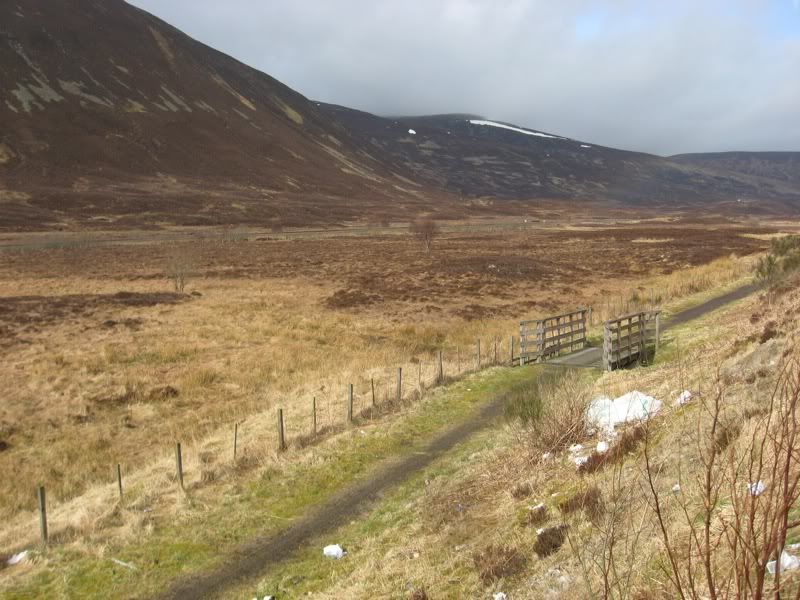
Many areas had obviously been recently clearcut. There were some areas of new growth, and more than a few patches of forest (mostly young evergreen), but the amount of clearcut land was very sad, despite how beautiful the barren mountains were.
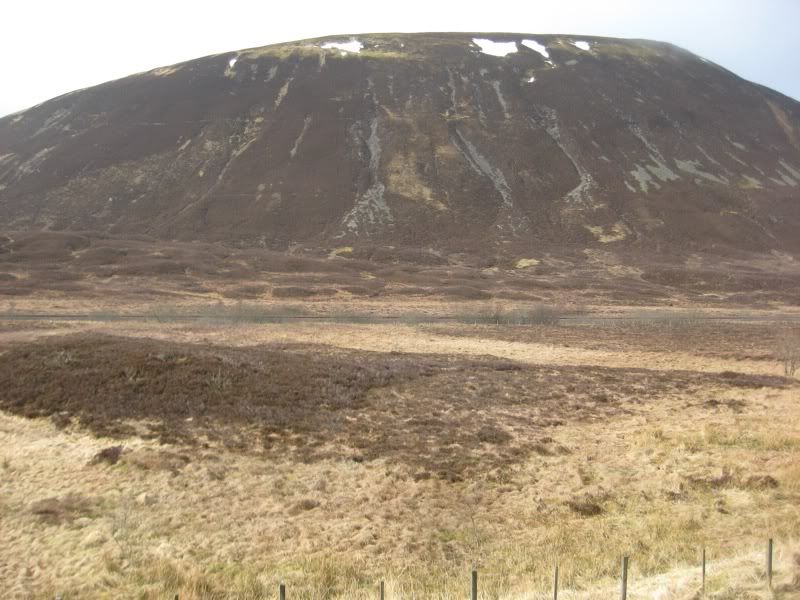
Sights like this must be even more amazing when the heather is in bloom.

The remains of a military fort, erected after a failed Jacobite uprising. The Jacobites, according to the guide, were a movement to put a Catholic King on Britain's throne; although they weren't exclusively Scottish, the majority were Highlanders. So after the uprising, the government increased its military presence up here to prevent it from happening again.
We had lunch in a picnic area by Loch Morlich in Cairngorms National Park, which is the biggest National Park in the United Kingdom.
It was very, very windy.
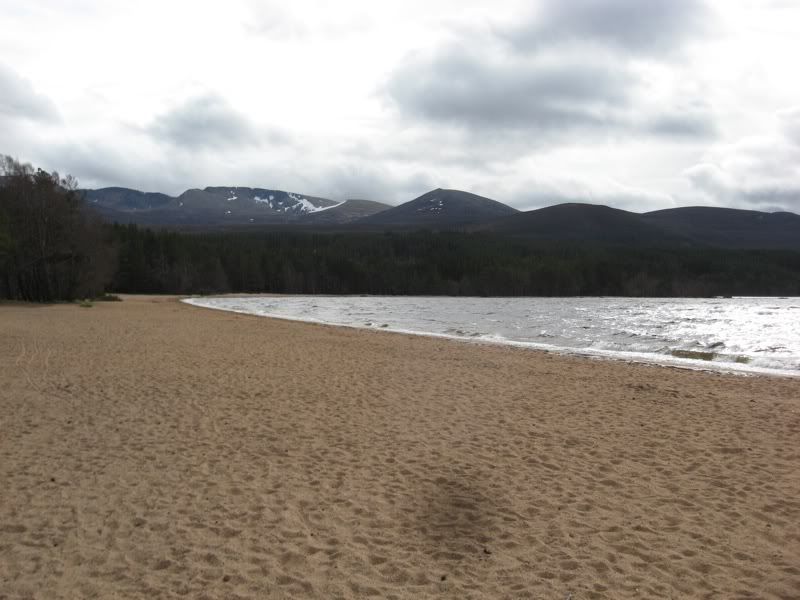
We ate in the shelter of the trees before braving the waterfront, which had the kind of wind so intense that it makes your ears and eyes hurt. We managed to stay for about five minutes before ducking back into the forest to explore.
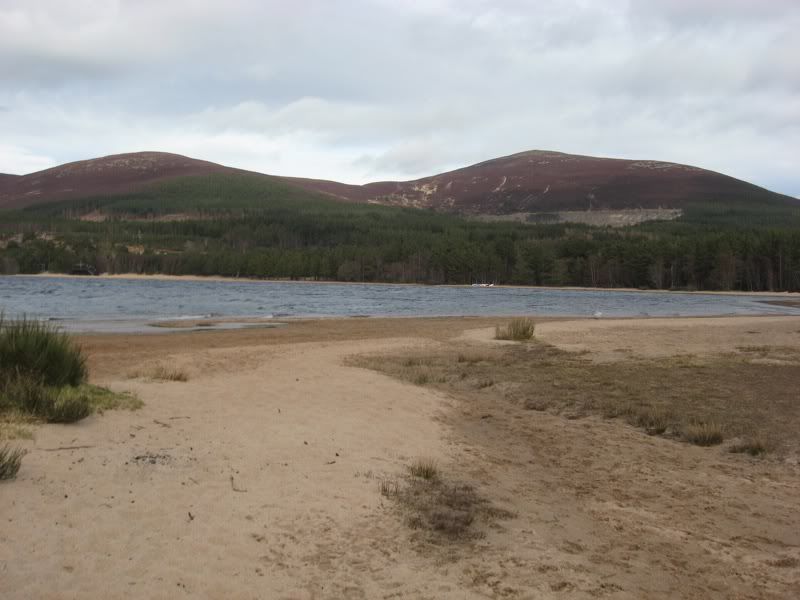
The nearby town reminded me of those towns you see in the Adirondack Park in New York: very aware that they're frequented by outdoor-adventure-oriented tourists. Very different from the expensive wool and pretty silver in Pitlochry, this town had stores with hiking gear and camping equipment.
We stopped next at Culloden Battlefield, which is just outside Inverness. Here, the Jacobites were annihilated by the government army in 1746. It's actually pretty sad to listen to, because the Jacobites were hopelessly outnumbered and outmatched.
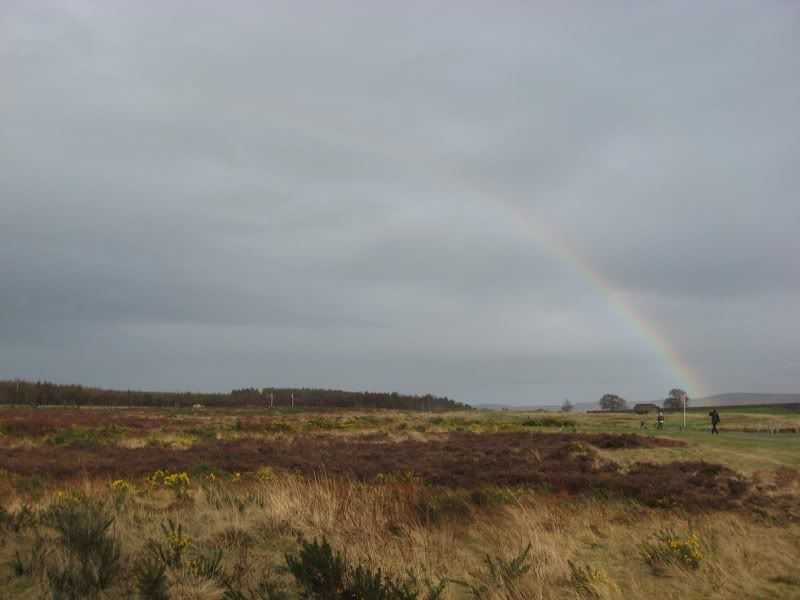
After this battle, the British Government took steps to squash Highland culture entirely: outlawing things like the Gaelic language and kilts and traditional Highland music. Remember the joke-that-wasn't-a-joke about some people officially labelling bagpipes as weapons? The country in question was, in fact, England. Harsh.
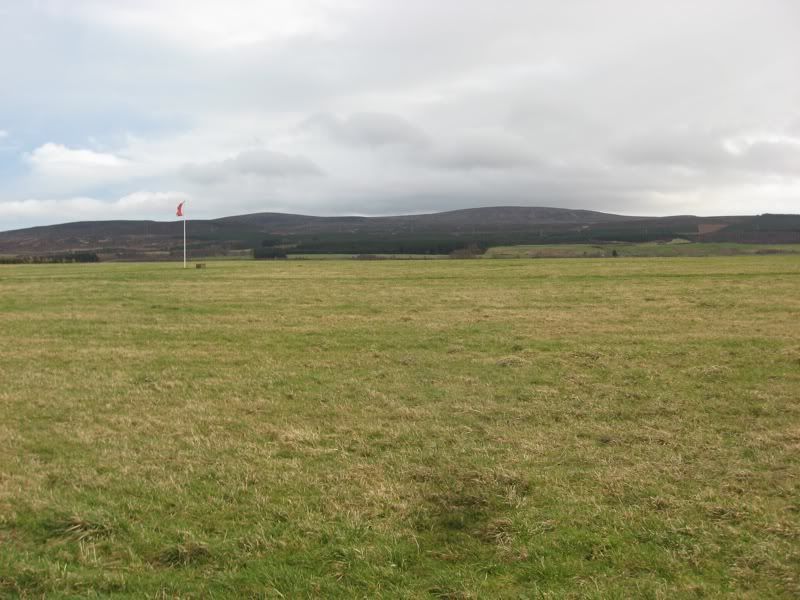
The ground was uneven and very boggy; it was hard to imagine charging across it or trying to fight in a battle. (Not that I could imagine myself doing that in ideal conditions, but you get the idea.) There were mass graves for the Jacobite deaths, sorted by clan. In another section of the field, one grave marked the burial site for the few casualties the government army had sustained. I know that being in Highland Scotland, we were getting a biased view of the matter, but it sounded very much like a slaughter.
Fittingly, it started to rain while we were out here, a cold rain in intense winds. Yet this was the one place where that kind of weather actually fit. As evidenced by the rainbow in the above picture, the sun did come out for some of it. The rain stopped as we were leaving the battlefield. Typical Britain.
On a completely unrelated note...
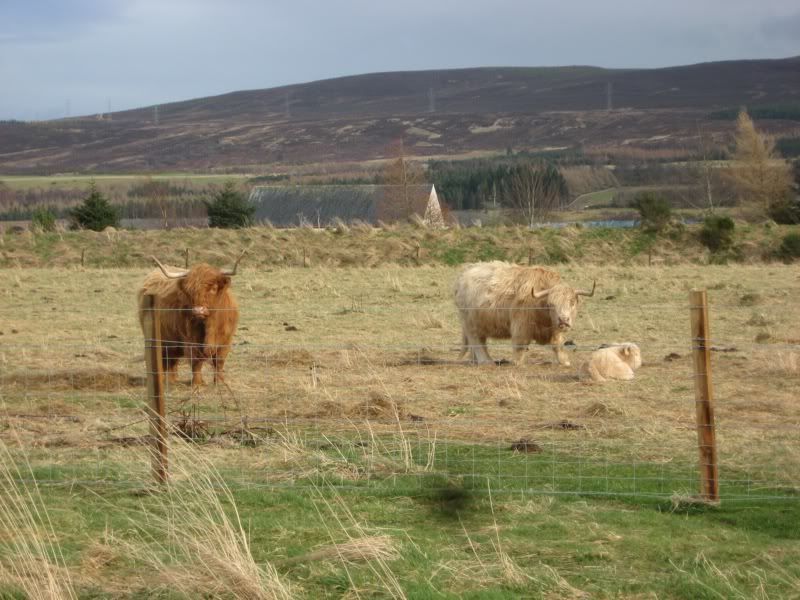
Highland Cows. Or "hairy coos". Stereotypical to the Highlands. On our trip up, we saw a number of these on farms. Still, like much of Britain, the farmland here is massively dominated by sheep.
Our last stop of the day visited some ancient burial sites, called the Clava Cairns. Apparently people of importance were buried here in prehistoric times.
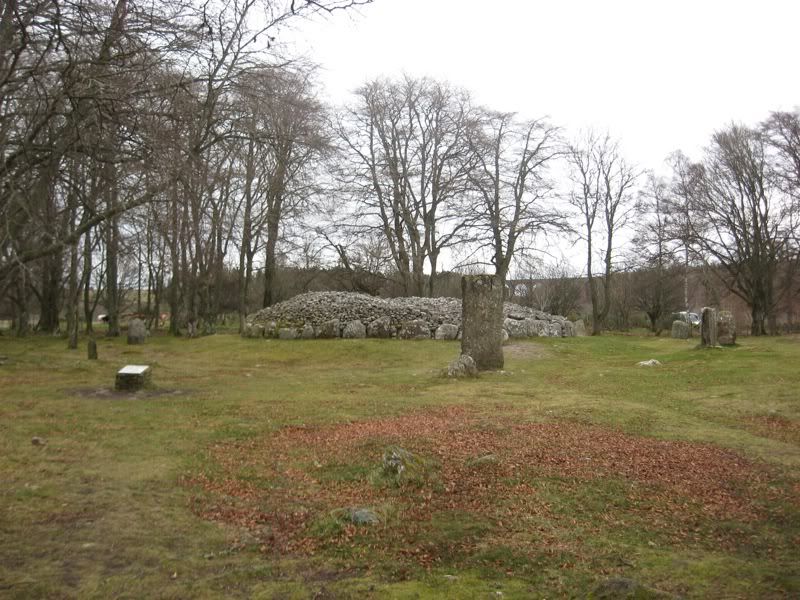
The entrance to one of these cairns was positioned so that the sunset of the spring equinox would line up with it, theoretically filling half the chamber with light (apparently a mirror system set up inside would help accomplish this). Very symbolic. I love ancient, druid-like designs and how they're built around the movement of the seasons.
An older Cairn was built nearby, positioned so that the people buried in the first one could - on the spring equinox - watch the sun set behind the grave of their ancestors. Beautiful. Except I'm spotting something of a flaw in this plan. A beautiful idea, with a minor hiccup. Anyone else see it?
Sun. You're in Scotland, and you're depending on this one time of one specific day to have SUN. I wouldn't count on that working out. Sorry, ancient dead people.
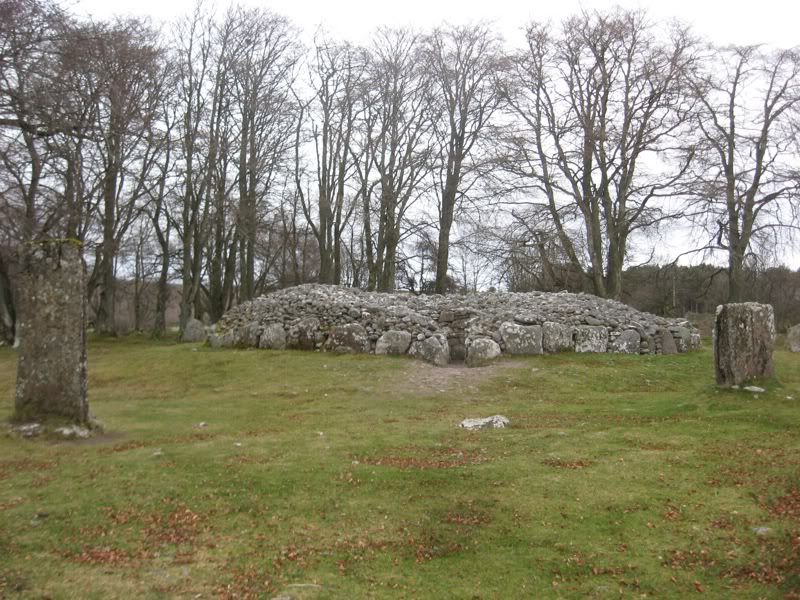
Then onto Inverness.
Inverness is not the most northern point in Scotland, but if Edinburgh were Anchorage, AK, then Inverness would be Fairbanks.
Ignoring the fact that Scotland could pretty much fit into the Seward Peninsula.
I've been told Inverness is a good gateway to the Highlands, but not much of a tourist attraction on its own. After one night here, I agree. It was a nice little place with a river and a shop-lined cobblestone street and a small cathedral (and what the guide called "the ugliest castle in Britain"). We got dinner and drinks here and it was nice (I even got to sample some local Scottish beer, which I quite liked), but nothing lost for not spending more than an evening in this town.
Though apparently Karen Gillan is from Inverness, so that's something.
Tomorrow: Loch Ness and the castle from James Bond and The Highlander
Advertisement
Tot: 0.046s; Tpl: 0.01s; cc: 15; qc: 23; dbt: 0.0167s; 1; m:domysql w:travelblog (10.17.0.13); sld: 1;
; mem: 1.1mb












